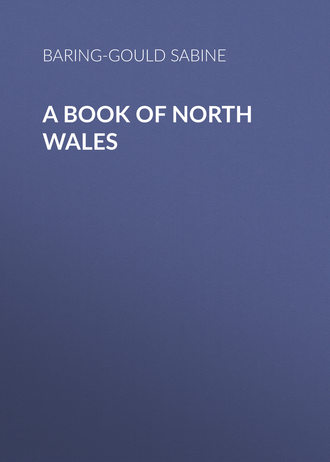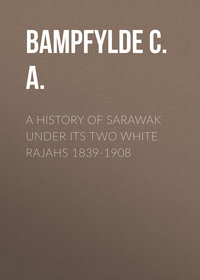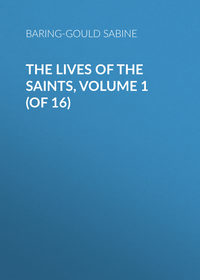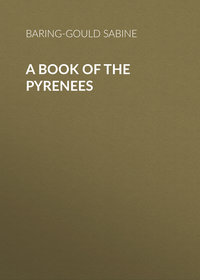 полная версия
полная версияA Book of North Wales
He gives us a Welsh air, “Difyrwch Gwyr Dyfi,” as a bardic melody, but it is found in Tom D’Urfey’s Pills to purge Melancholy, published in 1719-1720, and is the old English melody of “Greensleeves” spoiled. The melody of “Cynwyd” is none other than the venerable English air of “Dargason,” which may be traced back in England to the reign of Elizabeth. A tune given by Jones as “Toriad y Dydd” is the old English air “Windsor Terrace,” and “Y Brython” is a country dance published in The Dancing Master by Playford, 1696. Jones gives the “Monks’ March” as probably the tune of the monks of Bangor when they marched to Chester, about the year 603, and it is none other than “General Monk’s March,” composed at the restoration of Charles II., and “The King’s Note” is none other than King Henry VIII.’s “Pastyme with good company.” The “Ash Grove” is doubtful. It first appears as a popular song in Gay’s Beggar’s Opera, 1727, “Cease your funning.” The Beggar’s Opera became the rage in London, throughout England, Scotland, and Ireland, and we know that it was performed also in Wales. Edward Jones in his Bardic Museum, in the second series published in 1802, inserted a tune that seems to have been formed on it, but the resemblance was confined to the first part. John Parry touched it up and altered all the second part of the tune to what it is now. It is, of course, possible that Gay may have heard a Welsh air and introduced it into his opera, but it is far more probable that the Beggar’s Opera, which was repeatedly performed in Wales, introduced the melody into the Principality. One Welsh air Gay did insert in his play, “Of noble race was Shenkin,” and he may have picked up another.
Tunes are like birds of the air that fly from place to place and light on every tree, and are at home everywhere. There is a popular melody sung to very gross words by the peasantry in England. I picked it up in Devon, and it has also been found in Yorkshire, and a lady sent it me as heard in Wales, but without the words. Mr. Chappell has noted sixteen in Jones’s collection that are certainly English, and he did not exhaust the number.
A curious instance of the manner in which melodies drift from their original connections is that of the popular hymn tune “Helmsley,” to which is sung “Lo! He comes with clouds descending.”
Thomas Olivers was born in the village of Tregynon, in Montgomeryshire, in 1725; his father was a small farmer, who died when Thomas was a lad, and he was then committed to the charge of his father’s uncle Thomas Tudor, a farmer at Forden. In his youth he was of a merry and thoughtless disposition, and was dearly fond of dancing and all sorts of amusements. In his autobiography he states “that out of sixteen nights and days, he was fifteen of them without ever being in bed.”
Some years after, when he was in Bristol, he was “converted” by Whitefield, and he became a Wesleyan Methodist lay preacher, and in 1777 undertook the printing of Wesley’s Arminian Magazine. But his lack of education stood in his way, and in 1789 Wesley had to take the periodical out of his hands. In his Journal, Wesley enters his reasons: “1. The errata are unsufferable. I have borne them for these 12 years, but can bear them no longer. 2. Several pieces are inserted without my knowledge, both in prose and verse.”
Olivers became noted, however, as a hymn writer, and especially for his tune “Helmsley,” which he gave to the world, no doubt firmly convinced that it was original. But this it was not; it was a reminiscence of his old unregenerate days. In fact it is an opera air, and belongs to The Golden Pippin, in which occurs the song: —
“Guardian angels now protect me,Send to me the youth I love.”The Golden Pippin appeared in 1773.
Some of the stories connected with genuine Welsh airs are delightful. David Owen, of the Garreg Wen, lay on his death-bed, and fell into a trance. His mother, who was watching him at the time, supposed that he was dead. But presently he roused, and said to her that he had been in an ecstasy, and had seen heaven open, and the harpers about the throne were playing a wondrous strain. He called for his harp, and, with a radiance as of the world he had visited on his face, played the tune “Dafydd y Garreg Wen.” As the last note died away the flame of life passed from him. The air became fixed in his mother’s memory, and has thus been preserved.
Another story of the same musician is that he was returning home from a feast in the early morning, and daybreak overtook him as he sat on a stone – still pointed out at Portmadoc – and there, watching the soaring skylark, he composed the air “The Rising of the Lark.” The melody “Hoffedd merch Dafydd Manuel” (“The delight of David Manuel’s daughter”) is associated with a member of a very remarkable family. Dafydd Manuel was a poor cottager, born in Trefeglwys, Montgomeryshire, in or about 1625. He became a poet, and lived to a very advanced age, dying in 1726 at the age of a hundred and one. He left three children, two daughters – also excellent poets – and a son David. The elder daughter, Mary, noted for her wit and as a great harpist and singer, is she whose tune is called “The delight of David Manuel’s daughter.” Another member of the family, John, who fought in Egypt under Sir Ralph Abercromby, was thoroughly conversant in English, French, and Welsh. His daughter Sarah was quite illiterate till her thirtieth year, when she learned to read fluently and became well acquainted with the current literature of the day. Thomas Manuel, a sawyer, was illiterate till he grew to manhood, but accidentally becoming possessed of a French Testament, he resolved on mastering that language, which he did very quickly. His son William was a very remarkable boy, who at an early age – it is said at four, but this is hardly credible – could read English, Welsh, Hebrew, Greek, and Latin. At the age of eight he was placed in Christ’s Hospital, where he died of consumption on attaining his twelfth year. This extraordinary child had two brothers also possessed of great natural gifts. Thomas, the eldest, was an excellent Welsh, Latin, Greek, and English scholar. He also died of decline. Edward, the youngest, gave promise of even more extraordinary abilities than William. It is asserted that he could read English, Welsh, German, Latin, Greek, and Hebrew when only four years old, and he died of consumption at the age of five. Precocious geniuses are like candles that blaze away and gutter and are out quickly. The mother of these remarkable children, perceiving the thirst for learning evinced by them, taught herself to read and translate Latin and Greek, for the sake of helping them in their studies.
Some of the Welsh hymn tunes are magnificent, and one cannot but desire that some had been taken into such popular collections as Hymns Ancient and Modern, in place of the utterly insipid trash which has found its place there. But some are quite impossible of transference, as “Crug-y-bar,” one of the very best. The Welsh accent so differs from that of English, that to render the words into English, or write others to suit the melody that are not nonsense, is almost impossible.
The Welsh melodies have a charm of their own, and they are harp tunes; whereas a great many of the most popular of our English folk airs are hornpipes. But, as already said, the thing needed is a critical investigation and a sifting of Welsh melodies.
Gruffydd ab Llewelyn, king of Gwynedd (1039-1069) and prince of Wales, had a fortress at Rhuddlan. He was a notable man, and he played a conspicuous part in Welsh history before the Norman Conquest. Under him the Cymry developed an amount of military capacity that was unusual. At the commencement of his reign he raided Mercia and defeated the English forces under Edwin, the brother of Earl Leofric, and slew him in battle. Then Gruffydd turned his attention to South Wales, and defeated its prince, Howel, and forced him to take refuge in Ireland. Two years after Howel returned at the head of Irish kerns, and was defeated again. On this occasion Gruffydd captured Howel’s wife and made her his mistress. But in the ensuing year Gruffydd was himself defeated and made prisoner. He, however, escaped, and returned to Gwynedd. Howel, with a fleet from Ireland, entered the Towy, but was beaten and killed in battle by Gruffydd.
Under Harold an English army assembled at Gloucester and marched against the Welsh. Gruffydd made peace, but next year broke his engagements and invaded Mercia, which was defended by the sheriff and the Bishop of Hereford. They were, however, defeated, and both fell on the field of battle.
In 1063 Harold determined to crush his dangerous neighbour, and he marched to Rhuddlan and surprised Gruffydd, who, however, escaped in a boat. Unable to follow, and not strong enough to maintain his hold on the land, Harold contented himself with destroying Rhuddlan, and then retired to Gloucester, but only to concert a plan for a systematic invasion and subjugation of Wales. He collected a fleet at Bristol, and sailed along the coast ravaging it, whilst his brother Tostig, at the head of an army, wasted Gwynedd.
Hitherto the English had been accustomed to fight in close array, heavily weighted with their armour. They now abandoned their old methods, and adopted those of their foes, with the result that the power of Gruffydd was broken, and some of his Welsh followers turned against him and murdered him. “The shield and deliverer of the Britons,” says the Brut, “the man who had hitherto been invincible, was now left in the glens of desolation, after he had taken vast plunder, and gained innumerable riches, and gathered treasures of gold and silver, jewels, and purple raiment.”
The castle of Rhuddlan was rebuilt under the Earl of Chester at the same time as that of Montgomery, and these formed redoubtable outposts whence the Welsh could be watched and worried.
After the conquest of Wales by Edward I. a Constitution was drawn up at Rhuddlan in 1284, which was included among the statutes of the realm. English law was introduced. In the matter of succession to land, Welsh custom was to be followed. Upon a death occurring, estates continued to be divisible among all the children.
“The general constitutional effect was that the Principality was considered a distinct parcel of the Kingdom of England, ruled, however, by English laws, save so far as these were not modified by the provisions of the statute.”3
I have already told the story of Llewelyn, the last of the Welsh princes, and of his treacherous and unprincipled brother David, but I may here enter into fuller particulars of the end of David.
He had been a fugitive with his wife and children in the forests and mountains, hunted from place to place, with a few tenants accompanying him, grumbling at short commons and wretched quarters, casting sidelong glances at the English, and wondering whether they would not secure better meals and more comfortable lodgings if they turned against their lord and prince. And this desire took effect; for their own base ends they betrayed him to the English king. With the same measure with which he had dealt with his brother Llewelyn, it was meted to him. Delivered over to the hereditary enemies of his race by men of his own household, tongue, and blood, he was brought before Edward at Rhuddlan, and with him were handed over the crown of King Arthur and the rest of the regalia of Wales.
On the last day of September, 1283, Edward held a parliament at Shrewsbury for the trial of David, who was condemned to be hanged, cut down whilst still breathing, his belly sliced open, and his still palpitating heart plucked out. Then his body was chopped in pieces, and the parts distributed for exhibition in certain English towns. His head, forwarded to London, was placed on a spike above the gatehouse of the Tower. His steward, “faithful found, among the faithless faithful only he,” was also convicted of high treason, and was condemned to be torn to pieces by horses.
Edward, the second son of the King, was born at Carnarvon on April 25th, 1284, and the story goes that King Edward, then at Rhuddlan, having assembled there the principal men of Wales, announced to them that as the royal race of Cunedda was extinct, he would give to them a Prince of Wales who could speak no word of English, and who was a native of the Principality. The chieftains replied that this they would accept, and to him they would yield obedience. Thereupon Edward presented to them his infant son, recently born at Carnarvon.
By the death of Alphonso, Edward’s eldest son, at Windsor, this Prince Edward became heir-apparent to the throne.
Some of the jewels of the Welsh regalia were used for the decoration of the shrine of Edward the Confessor at Westminster.
In 1399 Richard II. was prisoner at Rhuddlan on his way to Flint. In 1646 it was captured by General Mytton from the Royalists, and was dismantled by order of the Parliament, and has remained a ruin since.
CHAPTER X
DENBIGH
The colonisation of Denbigh from the north – Denbigh Castle – Sir John o’ the two thumbs – Henry de Lacy – Projected transfer of cathedral to Denbigh – The Goblin Tower – Thomas Plantagenet – Robert Dudley – The bowling green – The Duke of Sussex and his breeches – Sir Hugh Myddelton – Sir Thomas Myddelton – Mrs. Jordan – Her last song – Llanrhaiadr – Anne Parry’s body – “The Three Sisters” – Ruthin – Contest with Owen Glyndwr – Reginald de Grey – Oppressive laws – Dean Gabriel Goodman – The Huail stone – The church – Moel Fenlli – Story of Benlli – Llandegla – Oblations of cocks and hensTHE county of Denbigh, together with that of Flint, was at one time all but permanently lost to the Celtic race.
The Angles of Mercia had advanced steadily and irresistibly along the broad level land from Chester, planting their stockaded forts where later would arise the stone-walled castles of the Normans, following the banks of the great estuary of the Dee, and supported by their fleets. They reached the mouth of the Clwyd, and began to spread up its fertile basin, driving back the Welsh before them. They had planted a large colony at Conway, and Deganwy, the old palace of the kings of Gwynedd, was in their hands.
Anarawd, son of Rhodri the Great, was king in North Wales, paying to the king of Wessex a reluctant tribute of gold and silver, and the fleetest of Welsh hounds; but he could not roll back the tide of Teutonic invasion, and he was forced to lurk in Snowdon and Anglesey, and look down from the rocky heights and heather-flushed mountains on the smoke of English farms that rose above the ruins of many a burned hendre of his people.
Then an appeal came to him from the Britons of Strathclyde, in North Lancashire and Cumberland, exhausted by the ravages of Danes and Saxons, asking for help. Anarawd could not assist them with armed hand, but he pointed to Flint and the vale of the Clwyd, and invited them to turn out the English there settling themselves, and “not yet warm in their seats.” They rose to the order, migrated in a mass, and dislodged the Angle colonists. But sorely misdoubting their ability to make good their hold, they entreated Anarawd to stand by them. He did so, mustering all the strength of Gwynedd; he joined forces with the Strathclyde immigrants, met the Mercian forces near Conway, and in a pitched battle (878) drove them back to the Dee, with immense slaughter, never to return. And thenceforth Flint and Denbighshire have remained Welsh.
Denbigh stands on a limestone height crowned by a castle, Din-bach, the Little Fortress or Castle. But that is not the popular derivation of the name. A monster, the Bych, occupied a cave in the face of the rock, now almost choked up. Thence it issued to ravage the country, but was killed by Syr Sion y Bodiau, the double-thumbed son of Catherine of Berain. But as Sir John Salusbury lived in the reign of Elizabeth, it is clear that some ancient myth has attached itself to him which belonged originally to a primeval hero. The first certain account of the castle is at the time of the final conquest of the Principality. King Henry III. granted the custody of it to Dafydd ab Gruffydd, that treacherous and unprincipled prince who was the brother of Llewelyn, the last Prince of Wales of the native stock. After the execution of David at Shrewsbury in 1283 the fortress was granted to Henry de Lacy, Earl of Lincoln, who erected the present castle.
Old Denbigh occupied the area in front of the castle, but this part was abandoned about the reign of Elizabeth for New Denbigh, built at the foot of the hill, either because there was lack of water on the summit of the rock, or because the steepness of the ascent rendered a residence more convenient lower down. Now the space within the walls is unoccupied save by the little church of S. Hilary, and the ruins of a cathedral begun by the Earl of Leicester, who proposed to transfer thither the seat of the bishop from S. Asaph. But it was not completed. This is to be regretted, as it would have been a most curious specimen of Gothic in its last stage of decay. We have plenty of examples of domestic architecture of the period, and very delightful they are, but of ecclesiastical buildings none. It was a period of church gutting and pulling down, and not of erection and decoration. Henry de Lacy was engaged on building the castle when a fatal accident disheartened him, and he left the work incomplete. He had erected a tower, now called that of the Goblin, over a well with an unfailing spring in it, that was to supply the castle. His son Edmund, a boy of fifteen, was playing in the tower, scrambling among the scaffolding, when he lost his footing, fell to the bottom, and was killed.
The water has now been drawn off to a bath-house outside, at the foot of the rock, and was at one time supposed to possess curative properties.
The dead boy’s spirit is thought still to haunt the tower, and his white face to be seen peeping out of the ruined windows.
Henry de Lacy’s daughter Alice was married to Thomas Plantagenet, Earl of Lancaster, and he by right of his wife became Earl of Denbigh. Edward of Carnarvon had received his father’s instructions before Edward I. died. Of these the principal were: that he should persist in the conquest of Scotland, and should not recall his favourite Piers de Gaveston. These commands were violated by the young King. His first act was to send for Gaveston, and to confer on him the royal earldom of Cornwall; and when, at the coronation of Edward, Gaveston was given precedence over all the great nobles of the realm, their wrath knew no bounds. Three days after the ceremony they called upon the King to dismiss his favourite. Edward was obliged to give way, and Gaveston to swear that he would never return. The Pope, however, released the favourite from his oath, and shortly after Edward recalled him. The Earl of Lancaster and Denbigh refused to attend the next parliament convoked by the King, and the barons, flying to arms, captured Gaveston at Scarborough, and by order of Thomas of Lancaster cut off his head.
The news affected the King with passionate grief, to which was quickly added a fierce desire for revenge.
Some time after the death of Gaveston, Edward found a new favourite, Hugh le Despenser, whose harsh attempt to enforce feudal law to his own advantage excited the marchers of Wales to arms against him. They were joined by Thomas of Lancaster, but he was defeated and taken to Pontefract Castle, where he was executed. Upon his death Denbigh was conferred on Hugh le Despenser.
The incapacity and favouritism of Edward occasioned a fresh outbreak, and Hugh le Despenser fell into the hands of the barons, who hanged him after a hasty trial. Then Denbigh Castle passed to another favourite, Roger Mortimer, the paramour of Queen Isabella. He was taken at Nottingham, arraigned in a Parliament summoned at Winchester, and hanged at Tyburn.
It really seemed that Denbigh was doomed to bring ill-luck on its masters. That ill-luck did not end with the hanging of Mortimer.
In 1566 Elizabeth granted it to her favourite, Robert Dudley, Earl of Leicester, whom she created Earl of Denbigh.
His conduct rendered him odious to the inhabitants, and his extortions drove them to open rebellion against his authority. He raised rents from £250 per annum to £800, he levied fines arbitrarily, encroached on private estates, and enclosed commons. Two of the young Salusburys of Lleweni pulled down the fences he had set up on the common land. He had them arrested, taken to Shrewsbury, and hanged there. The exasperation against Leicester became so great that the Queen was compelled to interfere, and he, with a view to make some satisfaction for the evils he had inflicted, began the erection of his cathedral, of which he laid the first stone on March 1st, 1579. But now the fate that had already fallen on three of the holders of Denbigh reached him. He died of poison at the age of fifty-six, on September 5th, 1588. The castle and lordship then reverted to the Crown, and from that time till the commencement of the Civil War drops out of historical importance.
The keep, grand entrance, and Goblin Tower are undoubtedly the work of Henry de Lacy. The gateway is best preserved, and over the entrance in a niche is a mutilated statue of Edward I., with lovely ball-pattern sculpture in the mouldings of the niche enclosing it.
The views from the castle over the Vale of Clwyd are most beautiful; none finer than from the bowling green. That was inaugurated by the Duke of Sussex in 1829.
During the carouse on that occasion, that took place in the arbour, His Royal Highness had the misfortune to spill a glass of punch over his lap. As his breeches were white, and he had not another pair with him, he was constrained to retire to bed till a local tailor could fit him out afresh. When the august visitor to Denbigh re-emerged into the streets, lo! already had the little tailor inscribed over his shop: “By Special Appointment, Richard Price, Breeches-maker to his R.H. the Duke of Sussex.”
There are two modern churches in Denbigh. The old parish church, S. Marchell’s, is at Whitchurch, about a mile out of the town. S. Hilary’s, in Old Denbigh, was only the castle chapel. S. Marchell’s is a good fifteenth-century building, and is now used as a mortuary chapel. The roofs are specially fine. In it is the tomb of Sir John “of the double thumbs.” He was a man of enormous strength, and is reported to have killed a white lioness in the Tower by a blow of his fist. He died in 1578. In the porch are two brasses of Richard Myddelton, of Gwaenynog, Governor of Denbigh Castle in the reigns of Edward VI., Mary, and Elizabeth, and of his wife Jane. Denbigh was the native place of Hugh Myddelton, who, largely at his own expense, brought the New River from Ware, twenty miles distant, to London. He was the sixth son of the above-mentioned Richard, and was a goldsmith in Basinghall Street. His elder brother Thomas was a grocer – so little in those days was trade thought to be unsuitable for men of gentle birth and good position. He represented Denbigh in Parliament several times, and obtained a charter of incorporation for his native town. A proper supply of pure water to the Metropolis had often been canvassed by the corporation, and the wells were frequently contaminated and productive of periodical outbreaks of fever.
Myddelton declared himself ready to carry out the great work, and in 1609 “the dauntless Welshman” began his undertaking. The engineering difficulties were not all he had to contend with, for he had to overcome violent opposition from the landowners, who drew a harrowing picture of the evils that would result were his scheme carried through, as they contended, for his own private benefit. Worried by this senseless but powerful party, with a vast and costly labour only half completed, and with the probability of funds failing, most men would have broken down in bankruptcy and despair. But James I. came to his aid and agreed to furnish one half of the expense if he were granted one half of the ultimate profits. This spirited act of the King silenced opposition, the work went on, and in about fifteen months after this new contract the water was brought into London.
The popular story is that Myddelton ruined himself by this undertaking, and had to apply for relief of his necessities to the citizens of London, who, however, failed to unbutton their pockets for their benefactor. He fell into poverty, and disguising himself under the name of Raymond, laboured as a common pavior in Shropshire.









